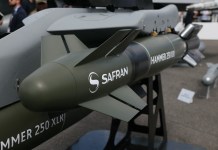Poland has selected Sweden as its partner to deliver three cutting-edge submarines, a pivotal move to modernize its navy and counter escalating Russian threats in the Baltic Sea, Defence Minister Władysław Kosiniak-Kamysz announced Wednesday.
The choice anchors Poland’s long-stalled “Orka” (Orca) program, designed to retire its lone, perpetually patched-up Soviet-era Kilo-class submarine, ORP Orzeł, commissioned in 1985, and to introduce three advanced diesel-electric vessels by 2030.
Without swift action, Warsaw risked a total undersea blackout, leaving submariners without platforms to hone skills amid rising tensions since Russia’s 2022 invasion of Ukraine.
“The Swedish offer is the only one that fully meets the navy’s expectations,” Kosiniak-Kamysz declared to reporters, emphasizing its alignment with operational needs and timelines.
“This decision erects a new security architecture across the Baltic Sea,” he added, underscoring the vessels’ role in bolstering NATO’s eastern flank.
The deal, valued at around 10 billion zlotys ($2.73 billion), targets a formal contract by Q2 2026, with the lead boat arriving by decade’s end.
Sweden’s bid features Saab’s A26 Blekinge-class submarines—Sweden’s largest and quietest to date—tailor-made for the Baltic’s shallow, cluttered waters yet versatile for blue-water ops.
Armed with heavyweight and lightweight torpedoes, naval mines, and a multi-mission portal for special forces and unmanned underwater vehicles, the 2,500-tonne boats boast Stirling air-independent propulsion (AIP) for up to 18 days submerged and 45 days total endurance.
Crucially, the package includes interim training solutions to bridge the gap until full delivery, ensuring Polish crews stay sharp.
Saab’s CEO Micael Johansson hailed the nod as “an honor,” noting the A26’s edge in confined seas: advanced sensors like Atlas Elektronik flank arrays, Safran optronics, and mine-navigation sonars make it a stealthy predator against foes like Russia’s Northern Fleet.
Yet Saab tempered enthusiasm in a statement: “We have not signed any contract nor received an order,” signaling negotiations ahead.
“Poland and Sweden share a profound understanding of Europe’s security challenges,” Swedish Prime Minister Ulf Kristersson posted on X, pledging to “significantly deepen our political, defense, and industrial ties.”
The partnership, backed by a joint letter from Kristersson and UK Prime Minister Keir Starmer, also eyes industrial offsets with Poland’s PGZ group for local jobs and tech transfer.

Warsaw outmaneuvered rivals including France (Scorpène), South Korea (Hanwha Ocean), Spain, Germany-Norway (Type 212), and Italy (Fincantieri) after a rigorous review.
This caps a saga launched in 2013, revived under PM Donald Tusk’s push for year-end closure.
Poland’s naval renaissance reflects its post-2022 spending surge—to 4.8% of GDP in 2026, NATO’s highest relative share—transforming a legacy force into a Baltic powerhouse.
As Russian submarines prowl Kaliningrad waters, these “silent hunters” could tip the scales in a flashpoint where undersea dominance means deterrence—or disaster.
Via Agence France-Presse




